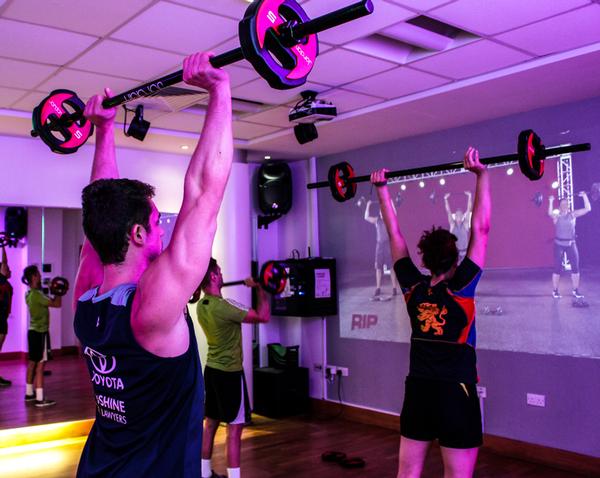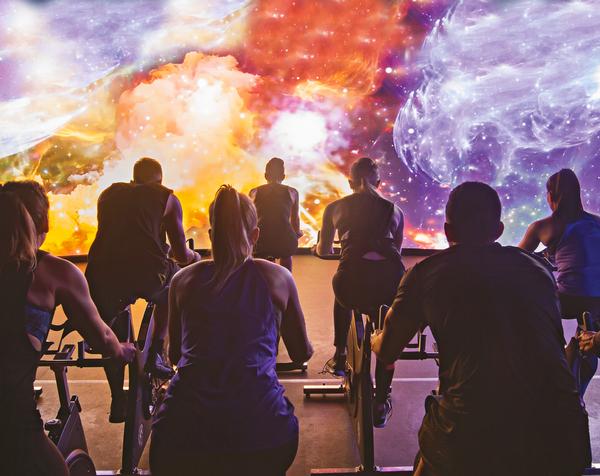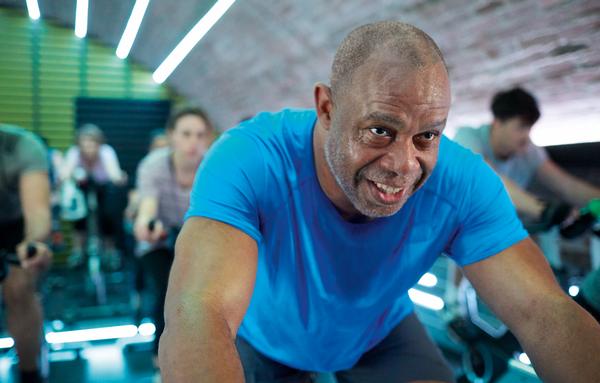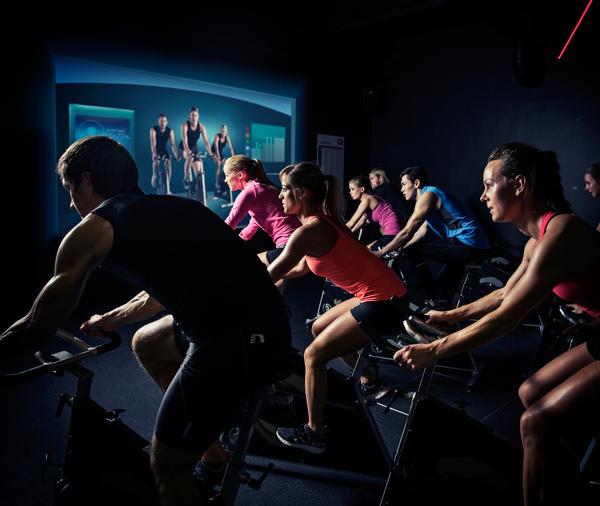 SELECTED
ISSUE
SELECTED
ISSUE
|
|
Leisure Management - Going virtual

Talking point

|
|
| Going virtual
|

Several years have passed since virtual fitness classes were first introduced into gyms.
But what benefits have they brought to operators and how are clubs adapting their
virtual offerings to ensure they stand out from the crowd?
|
|
The growing popularity of group exercise classes and increasing member desire for access to classes at all times of day has driven a rise in virtual fitness classes. Operators are turning their studios into immersive and sophisticated environments, and in doing so they’re making these classes destinations in their own right, rather than something reserved for off-peak hours at the club. But with systems starting at around £2,000 and supplementary equipment often required to create the full experience members require, virtual fitness is undeniably an ongoing investment. We ask the experts to share their experiences of virtual classes and their opinions on what clubs must do to make it a success.
|
|
 |

James Buckley
Health, fitness and wellbeing lead
The Edge, University of Leeds
 |
|
We launched our Fitness on Demand virtual classes in August with the aim of expanding our offering and tackling capacity demands. Occupancy for our 246 weekly classes is usually around 85 to 90 per cent. Sometimes they are over-subscribed, so the virtual class timetable has been designed to handle the overspill.
Our 50 virtual classes complement, rather than compete with, the live classes. One key advantage has been that we can be very niche with our offering, which widens the appeal of the club. For example, lots of our international students remain on campus during the Christmas holiday. With this in mind, last year we worked with Les Mills to put on Mandarin-led classes over the Christmas break. They were very well received, with 155 visits.
Part of the strategy going forward will be to use virtual classes to widen participation. We have 17,000 members at peak times of the year, but with 32,000 students at the university, as well as staff, alumni and the general public, there is still plenty of untapped potential. Our aim is to create a more active campus and we see virtual as a useful tool for doing that. We will be looking to expand the content we offer in other languages, as well as taking classes to different areas of the campus, such as residential sites.
We currently average over 1000 visits a month for our virtual classes, with occupancy ranging from 8 to 40 per cent across the various genres. However, I’m happy, even with the low-capacity classes, as virtual classes provide a low-cost way of servicing members, while allowing us to be experimental in our programme offering. It works really well for our technology-savvy, millennial audience.
“Lots of our international students remain on campus during the Christmas holiday. With this in mind, we worked with Les Mills to put on Mandarin-led classes over the Christmas break”
| |


|

Virtual classes increase capacity |
|
|
 |

Stuart Glover
Manager
Salt Ayre Leisure Centre, Lancaster
 |
|
A fully immersive, virtual cycling studio was added to our club 12 months ago, as part of a £5m refurbishment, designed to make Salt Ayre a cutting-edge facility. It is the first immersive cycling studio in the north east and we’ve been holding 50 instructor-led classes in the immersive studio each week. We offer Les Mills’ programmes like The Trip, Sprint and RPM, where the screen is used to add to the immersive environment. These classes are really popular – even though we run 15 classes a week for The Trip, we still can’t satisfy the demand from members!
Additionally, we hold 51 classes with a virtual instructor during quiet times. This meets demand for classes during off-peak hours when it isn’t worth running an instructor-led class. On average, 300 people use these sessions each week.
Another advantage we’re finding is that the instructor-free sessions are attractive to those who are new to exercise – they find it less intimidating. The dark room with feature lighting makes people feel like no one is watching them and participants can go at their own pace and manage the resistance of their bike.
As a number of improvements were made simultaneously, it’s hard to say what has been the most significant in terms of turning the centre around, but membership has soared from 700 to almost 2,700 since the redesign. We have a lot of competition from private health clubs and gyms in the area, but we have used the studio as a USP to attract and retain members.
“It’s hard to say what has been the most significant in terms of turning the centre around, but membership has soared from 700 to almost 2,700 since the redesign”
| |


|

Salt Ayre boasts the first immersive cycling studio in the north east and this helps the leisure centre to stand out |
|
|
 |

Charlie Banfield
National Commercial Manager - Group Exercise and Swim
Nuffield Health and Fitness
 |
|
Nuffield is currently using virtual classes across our NuCycle and NuSpace studio spaces, offering virtual indoor cycling experiences through the MyRide VX system, and Mind and Body classes through the Wexer system.
Virtual classes allow us to run both digitally-engaging live classes and instructor-free classes. As we can provide additional classes at off-peak times, we can extend the use of the NuCycle and NuSpace studios to increase participation, making group exercise accessible to more people.
We have seen an increase in class numbers, member satisfaction and retention. We have also found circumstances where scheduled virtual classes have drawn more members in, which in turn has created opportunities for us to convert these to live classes to meet member demand.
The majority of our classes are scheduled around member demand, therefore they are all automated and the member just needs to turn up. For the on-demand scenarios, the systems are very easy to access and members of the teams are always there to support if needed.
We will continue to roll out virtual classes across both corporate and consumer clubs, looking at how we can further support our corporate customers as employee wellbeing continues to move up company agendas. Building on our experience in this area and taking the lessons learned from our existing virtual offerings, we will be developing virtual classes to best support our corporate clients.
“We have also found that scheduled virtual classes have drawn more members in, which in turn has created opportunities for us to convert these to live classes to meet member demand”
| |


|

Nuffield is looking at how virtual classes can support corporate members to improve their employees’ wellbeing |
|
|
 |

Lucy Button
Global Marketing and Communications Manager
Wexer
 |
|
Globally, the adoption of virtual fitness classes is on the rise, although the uptake in the UK lags slightly behind some other markets. What we are seeing is that more operators are starting to regard virtual as part of their overall digital strategy – and not just as a group exercise solution.
German-operator McFit is one example. The chain first introduced virtual classes in 2013 and has since created a buzz around the concept, via an experience that excites its tech-savvy, young demographic. It has invested in cinema-style studios, with massive screens and sophisticated sound systems, where back-to-back Cyberobics workouts are played to packed classes. The company has created its own content in eye-catching locations ranging from Miami to the Mojave Desert.
I believe that as the fitness industry grows even more technology focused, virtual classes will become more popular – particularly appealing to the increasingly influential millennial market.Forward thinking operators are creating their own virtual fitness content, so they can make their classes on brand and have full control over the content. They are also using the Wexer system to broadcast exercise classes live from a single club to the whole estate. This means that if an operator has one particularly great instructor located at one club, all of its clubs can benefit from the instructor’s expertise.
“What we are seeing is that more operators are starting to regard virtual as part of their overall digital strategy and not just a group exercise solution”
| |


|

Some clubs are investing in state-of-the-art studios with cinema-style screens and high-tech sound systems |
|
|
 |
| Originally published in Health Club Management 2018 issue 3
|
|
 |
|